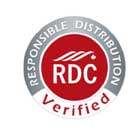Industry Information, Shipping to Canada
Why U.S. Freight is so different from Canadian Freight – 10 Part Series – Part 1
How Geography affects Transportation
Geography and geographic factors significantly affect freight patterns, particularly when you contrast U.S. freight with Canadian and transborder freight. Here are some of the geographic factors that affect transportation:
Population Distribution
In Canada, 80% of the population lives within an hour’s drive of the U.S. border. By contrast, population in the US is more or less distributed throughout large population centers down the East and West Coast, Texas and surrounding the Great Lakes. Freight in the U.S. typically is consolidated and then moves through “hub and spoke” distribution networks where freight is line hauled from one large population center to another large population center. It is then de-consolidated and distributed, or furthered on to another distribution hub. This works well because the distribution centers cover 360 degree zones around their location for pickups and deliveries. This strategy however does not work well in Canada. Since most of the population lives in a thin strip along the US border, freight primarily moves east and west, or to the US and back. The hub and spoke system just isn’t very cost effective when freight only goes in two directions. Freight movements in Canada might better be compared to a bus route where freight is picked up and delivered along the way between origin and destination. This takes a lot of coordination and depends upon the right combination of equipment and space going to the right place for it to work. The other population distribution factor that affects freight in Canada vs. the U.S. is the percentage of the population that lives in just a few urban centers. In Canada, the majority of the Canadian population lives in the greater metropolitan areas of Toronto, Montreal, Vancouver and Calgary. The rest of Canada is relatively sparsely populated. As you can imagine, freight moves from one island of population to another. Rail and intermodal play important roles because of the large line haul components. Transborder freight from the U.S. back to Canada typically moves between U.S. origins and destinations to or from one of the 4 major centers in Canada. This is very different from the hub and spoke distribution common in the U.S.
How Size Scope Affect Transportation
 Canada leads to some unique transportation challenges. For example, the entire eastern seaboard of the United States from Maine all the way down to almost Florida and west as far as Alabama would fit in just one Canadian province. Ontario, for example, would be of similar size. In the U.S. freight shippers are accustomed to having state to state rates. In Canada, the sheer size of any province makes this impossible.
Canada leads to some unique transportation challenges. For example, the entire eastern seaboard of the United States from Maine all the way down to almost Florida and west as far as Alabama would fit in just one Canadian province. Ontario, for example, would be of similar size. In the U.S. freight shippers are accustomed to having state to state rates. In Canada, the sheer size of any province makes this impossible.
Weather and Climate Also Affect Transportation
Together with geography, weather and climate are significantly different from most parts of the United States. While some of northern states do get harsh winters, all of Canada gets extremely cold in the winter. There is a real need for heated equipment and temperature controlled transport in the winter months, something that is a relatively minor issue in the United States. This can become a large issue when shipping liquid freight to and from Canada during this season. Additionally, because of the intense cold, in many parts of Canada the ground freezes solid and then thaws in the spring to a very muddy mess. Northern Alberta and Quebec have frost season freight restrictions. The weight legally allowed to be transported by road is restricted on provincial roads to prevent them sinking during the thaw as well as to minimize damage.
Accessibility Affects Transportation
With the exception of Alaska, the U.S. generally does not have the accessibility problems that Canada has. There are many points in Canada that are only accessible by air, barge or ship. There are also many northern points that are only accessible during winter months when trucks can drive on frozen lakes and rivers.
Leave it to the experts
If you are in the U.S. and planning on shipping to Canada, you need some local expertise to help you. At DSN Chemical Transportation you’ll find logistics planners with over 25 years experience in the business. We will help you plan the most cost effective and expeditious movements of your shipments. Call DSN today for a free consultation or quotation on any of your shipping needs.
About Author
Comments are closed











